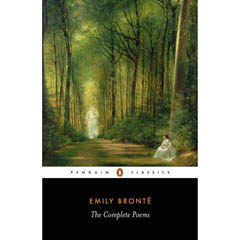Emily Bronte and Ellis Bell
The archetypal feminine in Emily Bronte's poetry
By: Christine Gallant
Thesis: Emily Bronte's writing is "significantly shaped by her experience of what it was to be a woman in the nineteenth-century England," through Gondal.
Summary:
Summary:
- Most critics forget about Gondal
- Emily writes very characteristically in the feminine style (passion, fierce, emotional, spiritual, etc)
- Started to write poems of Gondal at 8 yrs. old
- Emily kept with Gondal till her adult years as well as stayed true to the details of the mythical place
- Poems are based in the fictional Pacific islands of Gondal and Gaaldine which have a continuous civil war.
- Chief of Gondal is Queen Augusta of Almeda
- Chief of Gaaldine is King Julius Brenzaida of Angora
- Some critics say that she put herself in Gondal to be a better part of her mythical world thus write better
- Emily only writes a few “personal poems” but the distinction of the personal poems and Gondal are clear
- This means that Gondal is not a representation of her life or emotions
- Her personal poems search for individuality and the meaning of it
- Gondal is the typical Feminine style which includes ethereal and maternal themes
- Emily did not really mature into a woman, and resisted the obligation of womanhood. She was strict and severe
- Never fell in love (or no records of it)
- Emily performed many physical labors around the house (un-feminine)
- The poems of Gondal, though written in the span of 13 years, did not grow with Emily. Rather, they remained as constant as to when she first started at the age of 8
- There is still the recurring theme of passionate women
- The poems’ speakers are usually women or a lover remembering a woman
- It is theorized that if Emily has continued down the road of living her feminine in Gondal, she would have lost her individuality
- During the social context of 19th century England, that she was undoubtedly un-feminine
- In her manners of speech, reserve and desire for solitude
- Emily still sought a feminine within herself

